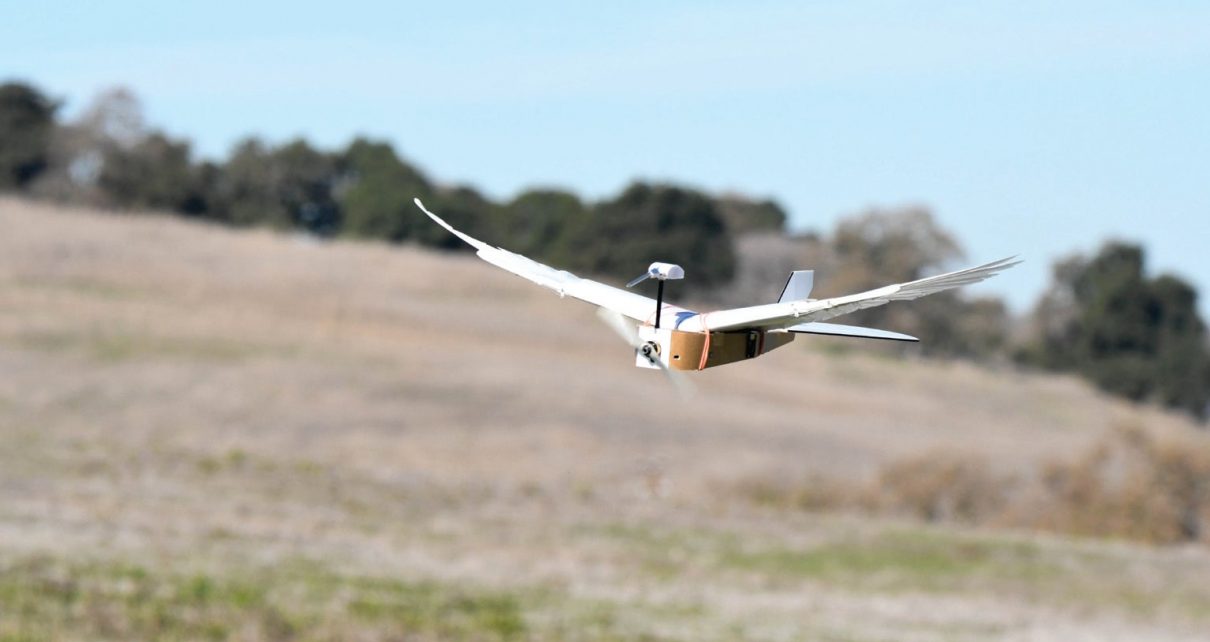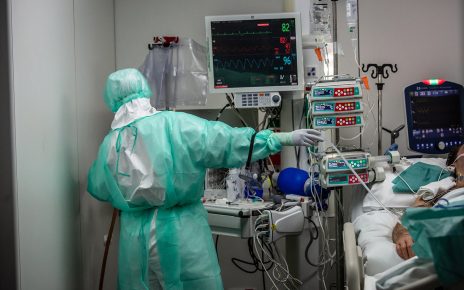As far back as Icarus’s ill-fated aviation attempt, humans have looked to birds for inspiration in our airborne endeavors. But truly birdlike flight with flexible, feathered wings has long eluded us; for one thing, engineers have struggled to understand how birds control wing feathers. But two new studies could change that. Researchers recently designed and flew a robot with feathered wings that can change shape midflight like birds’ do, giving it greater maneuverability than rigid drones.
To design the winged robot, the researchers first used motion-capture video to examine how pigeons fold and flex their wings while flying. Based on the results, they determined it was possible to control 20 feathers on each wing of a robot—which they dubbed “PigeonBot”—via elastic bands connected to just two joints. They also used modern imaging technology to gain new insight into how microscopic structures temporarily hook many bird species’ feathers to one another during flight. PigeonBot needs real feathers to work, so researchers must still find ways to artificially reproduce feathers’ qualities to take the technology to the next level.
The scientists modeled the robot’s wing and feather movements closely on those of live pigeons, says study co-author Eric Chang, a mechanical engineer at Stanford University. Pigeons can sharply turn and bank by changing their wing shape, an attribute the researchers wanted to build into their flier. Motion-capture footage showed how pigeons do this primarily by opening and closing their wrist joints.
Once the researchers built a prototype—a foam-board body with onboard electronic guidance systems and elastic bands controlling real pigeon feathers—they first flexed its wings in a wind tunnel to determine if it could function in blustery real-world conditions. It worked, paving the way for gliding and turning tests outside the laboratory. Chang piloted PigeonBot from the ground and describes it as an incredibly nerve-wracking experience: “[When] we had landed in one piece, I do remember collapsing on the ground afterward in this sense of relief,” he says. The scientists published their results in January in Science Robotics.
Pigeon feathers can automatically attach to their neighbors to form a smooth, flexible flying surface, and PigeonBot’s makers had to figure out exactly how. Like many bird species, pigeons accomplish this with microscopic structures called lobate cilia, which ornithologists documented early in the 20th century. But partly because of the limits of light microscopy at the time, they assumed birds’ lobate cilia worked by simply increasing friction between feathers, much like rubbing pieces of sandpaper together, says Teresa Feo, a zoologist at the Smithsonian National Museum of Natural History, who contributed to a second paper from the team in Science, also in January. “What we discovered is the actual mechanism of those lobate cilia—that it is not friction, but hooking,” Feo says. The team demonstrated how these cilia release when birds fold their wings and grab each other again when the wings are extended.
Their new understanding was made possible by modern analytic techniques such as scanning electron and x-ray microscopy and CT scans, says study co-author Laura Matloff, a mechanical engineer at Stanford. “We’re the first to really revisit [lobate cilia] with this new instrumentation,” she says.
But there are still mysteries about how natural feathers work. The research group found that the cilia are notably absent from feathers of barn owls and nightjars, two species that stalk prey at night. Like Velcro, the microstructures are noisy when they detach; in these stealthy hunters, evolution may have favored silent flight over feather connectivity. “It’s pretty clear that this is an example of convergent evolution, where there was a trade-off,” says Julia Clarke, a paleontologist at the University of Texas at Austin, who was not involved in the studies. Clarke is intrigued by the cilia’s evolutionary history, although she says the tiny structures may be hard to find in the fossil record.
Emulating features that help make flying surfaces soft but sturdy could be invaluable in designing artificial morphing wings—a key step to building next-generation drones. Typical quadcopter-style drones are maneuverable and adept at hovering in place, but Chang says winged drones could be faster and quieter. The Stanford team is looking at how to best design not just “an actual wing shape that gives you more efficiency, but [the ability] to change that wing shape very dynamically” for streamlined flight, he says.
The research “points the way to new forms of biomimetic flying robots that could have a lot of useful applications,” says Phil Husbands, a bioinspired roboticist at the University of Sussex, who was not involved in either study. “An interesting future challenge might be the development of soft artificial feathers that can match the real thing in morphing ability.”
Soft, feathered wings are “completely unusual in aerospace engineering”—and building a working artificial feather remains a major challenge, says David Lentink, an aerospace engineer and experimental zoologist at Stanford and principal investigator on both studies. Structures such as lobate cilia are currently too small for 3-D printers to handle, he adds.
Still, PigeonBot’s current incarnation could help zoologists better understand how birds control their wings during flight, Lentink says. It is difficult to study live birds in a wind tunnel and nearly impossible to train them to move just a wrist or a single finger joint on command. “My goal is to develop more realistic models of birds and provide a range of species that fly very differently,” he adds. Museums have a wealth of feathers that could be used in robots that mimic other birds, allowing scientists to study “the diversity of flight,” Lentink explains. And replacing sentient animals with robots can reduce the need for animal research. “There’s a very broad range of things that you can study with these robots,” he says. “There are numerous scientific questions that spin out from this.”



